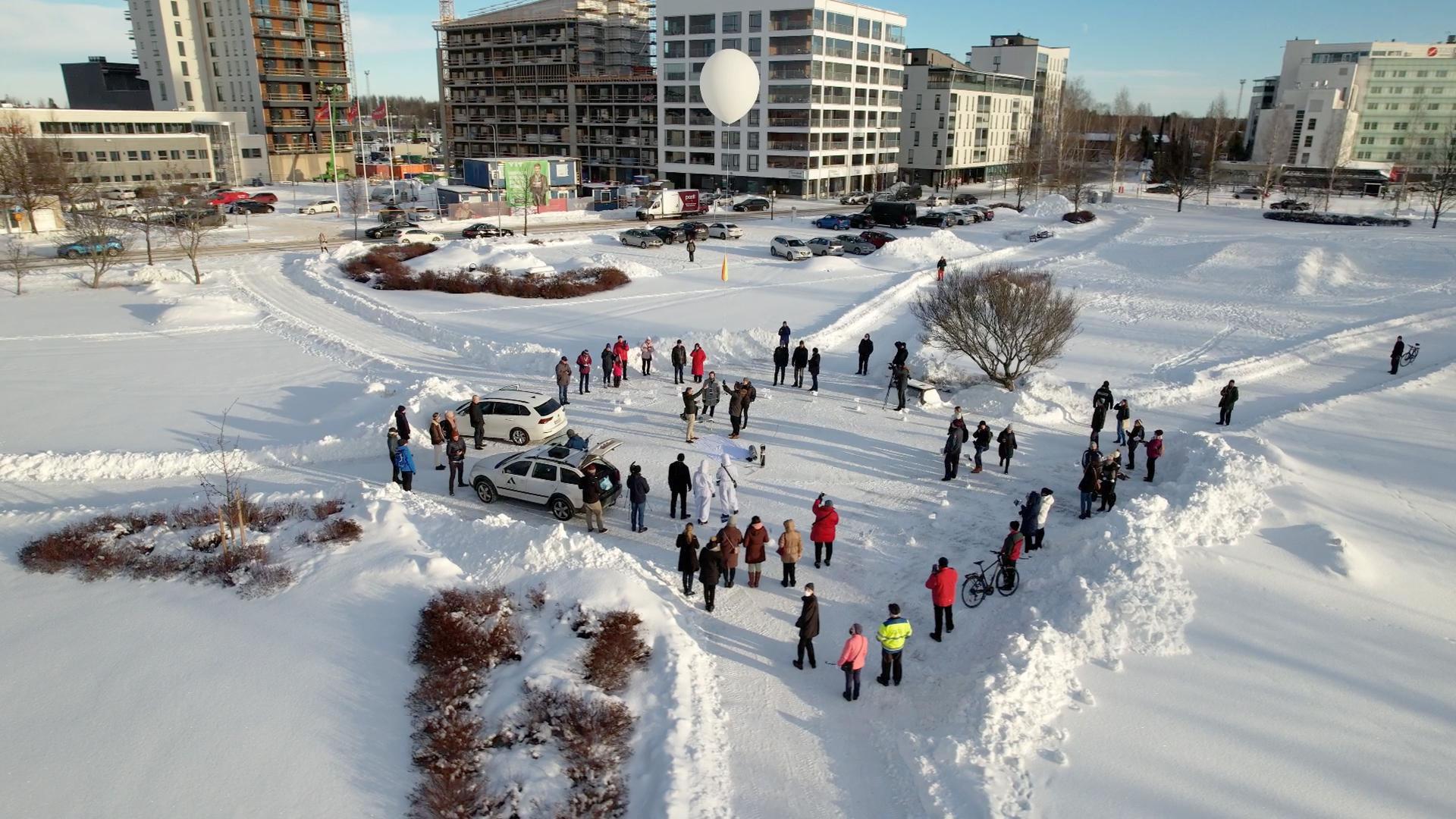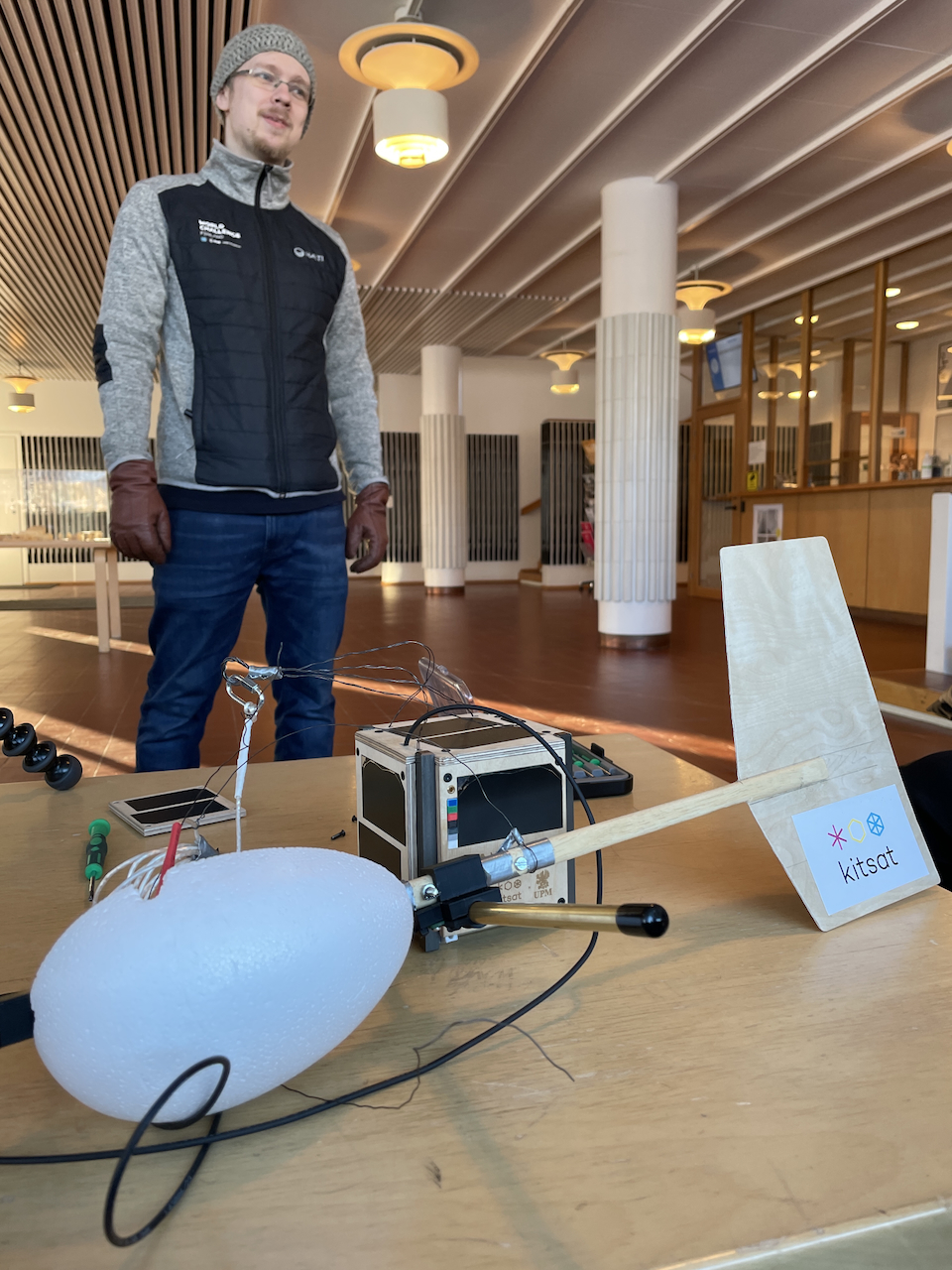

Despite being slightly stuck with the bureaucracy and delayed launch opportunities, the making of WISA Woodsat goes on. We use now more than planned time and effort for testing the satellite – and especially the camera boom because it is the only important moving part of the satellite. It is also very important as without a nicely extended selfie stick we can't take any photos of the plywood surface during the mission.
A balloon flight to the stratosphere and back is not like a ride to space, but the conditions up there at the altitude of around 30 kilometers are very much like in space: air is very, very thin, the sky is almost black, Sun shines brightly and the horizon is clearly curved.
Also, the operations with the satellite via a radio link are totally different than in a laboratory or with a static test setup; the satellite is out in the wild, and using the satellite is like commanding a satellite in orbit (except that the connection with the satellite is constant during a stratospheric flight instead of short flyovers).

On our first stratospheric flight last June, made from Heureka Science Centre in Vantaa (near Helsinki) we wanted to make sure that the connection with the satellite is stable and we can command it and take photos with a camera that was on the tip of the camera boom.
The boom was opened during the whole flight, and we planned to do later another flight for testing also the opening of the boom. This was now the purpose of a flight from Seinäjoki – and we indeed managed to keep the contact with the satellite perfectly, command it and test several settings for the camera boom opening.
The boom is a sophisticated deployable structure, consisting of dozen additionally manufactured, machined, and coated metal parts. It is attached to a hinge and guided by a rail in a hatch covering the bottom part of the satellite. When opened, the hatch will be released first and then the scissor mechanism powered by stings will be opened.
Freeing the selfie stick requires two commands, first for the hatch and another for the boom itself. This is a foolproof, extremely reliable, and simple act – but just like everything in the space business, it has to be not only repeatedly tested, but also verified in as natural conditions as possible.
So: up to the stratosphere for the second time!
Just like on the first flight, we used a test model of the satellite, not the actual WISA Woodsat going to space, nor the backup version. This test model was specially hacked for a balloon flight while it was as close as possible to the actual satellite.
"Capital of space"
For this flight, we teamed up with the city of Seinäjoki and Into Seinäjoki, Seinäjoki’s development company.
The slogan of Seinäjoki “the capital of space” refers to open space, and there is plenty of that in the surrounding plains of the Pohjanmaa district. As Jaakko Kaartinen, mechanical designer of the camera boom at Huld is from Seinäjoki, he proposed that we could expand this space upwards to the stratosphere with this balloon flight and it will bring Seinäjoki into the space age.

Later in spring Into Seinäjoki will also organize a seminar to the local companies about the business opportunities the new space economy offers, and we are happy to help with that as well.
But the first step was the flight last Wednesday. It was a beautiful winter day with temperatures just below zero celsius, Sun shining from the cloudless sky, and just moderate wind at surface level. The winds in the altitude were something else: jet stream heading to the east with a speed up to 140 km/h.
The windy situation wasn't a surprise as the forecasts showed even faster winds for a week beforehand. Therefore we wanted to lift off with a big balloon full of helium and keep the payload as light as possible. This would result in a short flight, though "short" here means about a 200 km distance between the launch site and landing area.
The preparations were done in beautiful Alvar Aalto designed Seinäjoki city hall and the launch site was located just outside in the middle of the Laukeudenpuisto park. The fresh snow that came on a day before, was shoveled off the launch site by the Seinäjoki Public Works with millimeter precision.

After a short interview for a TV station, the team (Kevin Vainio and Jaakko Kaartinen from Huld and Jari Mäkinen and Bruce Clayhills from Arctic Astronautics) put everything together on the launch site, started filling up the balloon, and varied the satellite was behaving nicely. Samuli Nyman, the head engineer of the satellite from Arctic Astronautics, was already closing a position below the balloon burst location on the predicted flight path.
The satellite was then released by the mayor of Seinäjoki Jaakko Kiiskilä at 11.05 local time in attendance of the small public. The balloon lifted off fast, with an estimated speed of 6.5 m/s, and headed east as predicted.

We had a great connection with the satellite from the very beginning. Stong signal just kept on going and we were able to communicate astonishingly well over a vast distance, more than 150 km, from locations in Seinäjoki and Karstula.
Most importantly, the commanding of the satellite was successful, and we received photos taken by the camera.

But then we had two hiccups. First, the winds blew the balloon outside the receiving range and we didn't get any photos from the (presumably) opened boom. Also, the telemetry was lost and we didn't receive the exact location of the balloon after the landing. And secondly, the backup GPS tracker didn't show any signs of life after the descent from the altitude.
Right now we're tracing the satellite and payload with other means and hope for the best; it would be nice to see the satellite with an extended camera boom. Hope is not lost at all, because one of our Kitsats was found from the forest after being lost for 18 months. When given some power, it woke up and beeped happily – like this test model of WISA Woodsat will surely do as well.
The flight lasted 2 hours and 28 minutes reaching a maximum altitude of around 28.4 km, traveling around 285 km with temperatures dropping as low as -48°C.
The next steps for the WISA Woodsat mission are – in addition to paperwork – further tests of the camera boom with different off-nominal situation scenarios and preparations for the final assembly. It won't be done until we have more clarity about the launch time.
